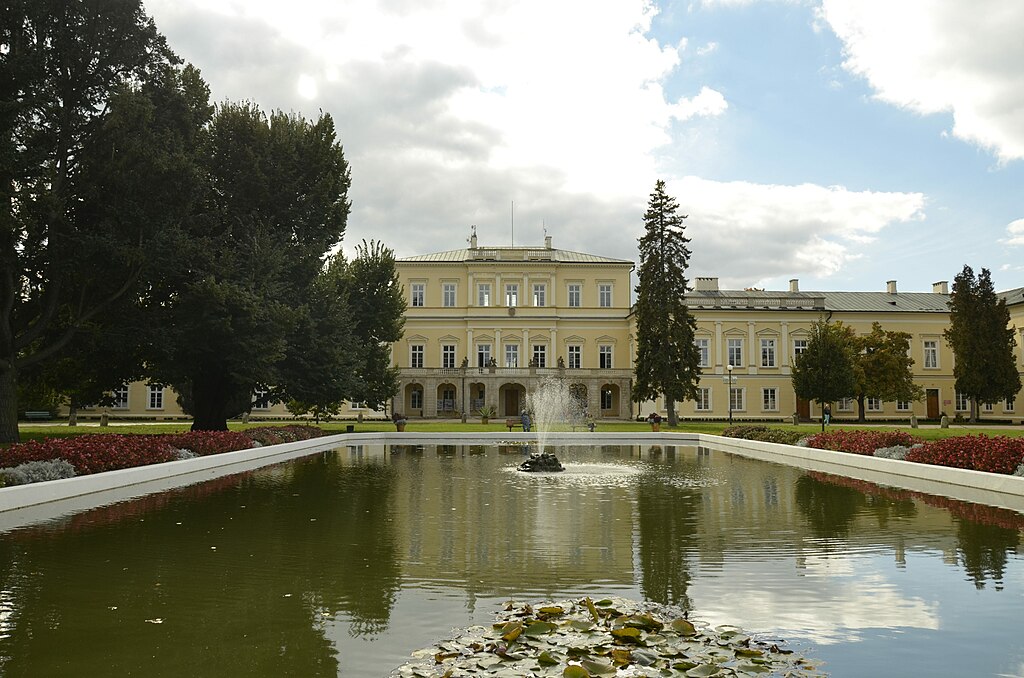|
|
Pulawy
Jun 26, 2011 13:19:10 GMT 1
Post by tschatzky on Jun 26, 2011 13:19:10 GMT 1
|
|
|
|
Pulawy
Jun 26, 2011 14:47:14 GMT 1
Post by Bonobo on Jun 26, 2011 14:47:14 GMT 1
Wow, I have come across this town because it was mentioned many times in the history of Poland which is my hobby. But now I am reading about it in Wiki and I am really surprised it was/is so important. en.wikipedia.org/wiki/Pu%C5%82awy
History
From the 17th century Pu³awy was the location of a rural residence of the Lubomirski, then the Sieniawski, noble families. In 1784 it became the property of Prince Adam Kazimierz Czartoryski and his wife Izabela Czartoryska, née Fleming. Under their stewardship, after the loss of Poland's independence in 1795 the palace became a museum of Polish national memorabilia and a major cultural and political centre. After the suppression of the November Uprising of 1830–31, the estate was taken over by the Russian government. The palace collections that had been saved became the nucleus of the present Czartoryski Museum in Kraków.
In 1869 an Agricultural and Forestry Institute was founded in Pu³awy. One of its first students, briefly, was the future Polish writer Boles³aw Prus (who had also spent part of his early childhood in Pu³awy). Prus would set his stunning 1884 micro-story, "Mold of the Earth," at the Temple of the Sibyl in Pu³awy.
The town was incorporated in 1906.
On 13 August 1920, Józef Pi³sudski, Poland's Chief of State, left Warsaw and established a military headquarters in Pu³awy. The Soviet Union's Red Army held most of eastern Poland and was besieging Warsaw. Pi³sudski's radio-monitoring, cryptological and intelligence services had detected a gap in the Soviet flanks in the Pu³awy region, and he ordered a concentration of Polish forces in the surrounding area around the Wieprz River. On 18 August 1920 the Polish Army launched a counter-attack directed from Pu³awy that encircled and defeated a 177,000-strong Soviet force. The attack drove the Red Army from Poland and established Poland's security for two decades, until the German invasion of 1939.
During World War II, three German concentration camps operated around Pu³awy. The town's Jewish population of some 3,600 was first confined to a ghetto, then murdered at the Sobibór camp.
Since 1966, a large chemical plant (Zak³ady Azotowe Pu³awy) north of the town has been producing nitrate fertilizer. Recently the plant has become the world's largest producer of melamine.
The most valuable landmark in Pu³awy is the baroque-classicist palace and park complex, dating from 1676–79, remodeled 1722-36 and by Chrystian Piotr Aigner ca. 1800. It includes classicist park pavilions dating from the early 19th century. One of these, the colonnaded round Temple of the Sibyl, is the setting of Boles³aw Prus' striking micro-story, "Mold of the Earth."
|
|
|
|
Pulawy
Jun 26, 2020 16:33:05 GMT 1
Post by Bonobo on Jun 26, 2020 16:33:05 GMT 1
But now I am reading about it in Wiki and I am really surprised it was/is so important. I tried to find some photos of the Old Town with the Market Square but to no avail - none. This place had always been a village until 1906 when it got urban rights.    It was famous thanks to one structure en.wikipedia.org/wiki/Czartoryski_Palace_(Pu%C5%82awy)   ![]() [/img] ![]() [/img] ![]() [/img] ![]() [/img] ![]() [/img] ![]() [/img] ![]() [/img] |
|













